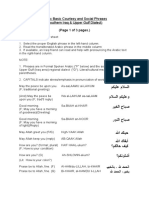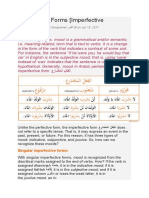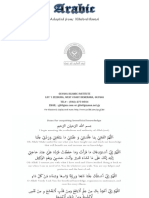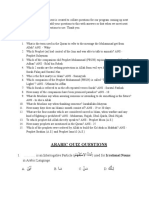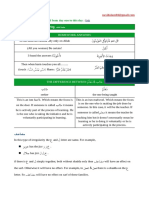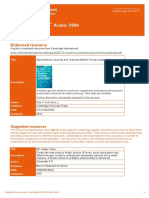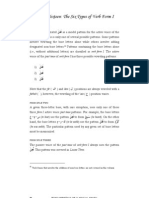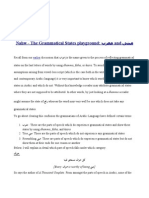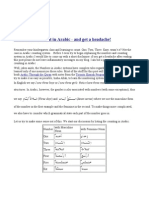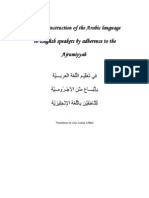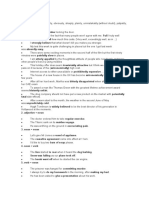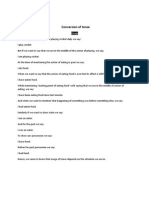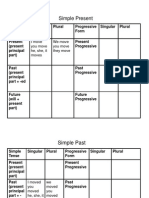0% found this document useful (0 votes)
1K views5 pagesSarf The Command Verb Constructing The Amr
The command verb, or imperative form, in Arabic has different conjugations depending on the person. The 2nd person command requires removing the imperfect tense marker and adding endings. The 1st and 3rd person command adds "lam" with kasra before the imperfect tense endings. An emphatic command can also be formed using the emphatic conjugations and replacing "lam" with fatha with "lam" with kasra.
Uploaded by
api-3709915Copyright
© Attribution Non-Commercial (BY-NC)
We take content rights seriously. If you suspect this is your content, claim it here.
Available Formats
Download as PDF, TXT or read online on Scribd
0% found this document useful (0 votes)
1K views5 pagesSarf The Command Verb Constructing The Amr
The command verb, or imperative form, in Arabic has different conjugations depending on the person. The 2nd person command requires removing the imperfect tense marker and adding endings. The 1st and 3rd person command adds "lam" with kasra before the imperfect tense endings. An emphatic command can also be formed using the emphatic conjugations and replacing "lam" with fatha with "lam" with kasra.
Uploaded by
api-3709915Copyright
© Attribution Non-Commercial (BY-NC)
We take content rights seriously. If you suspect this is your content, claim it here.
Available Formats
Download as PDF, TXT or read online on Scribd
/ 5

